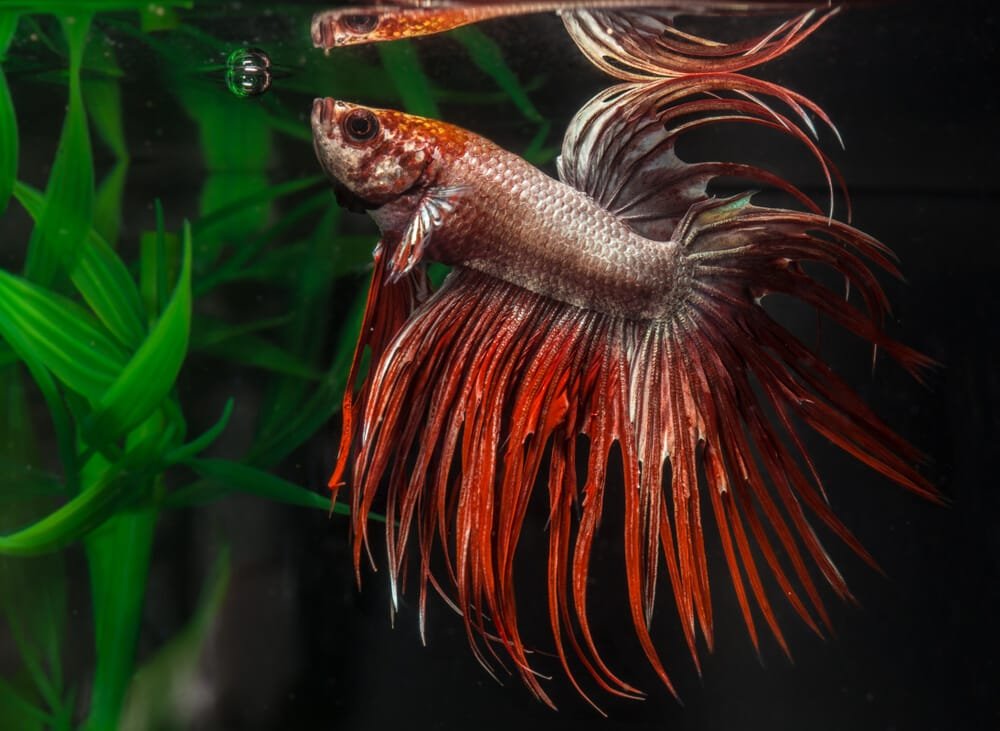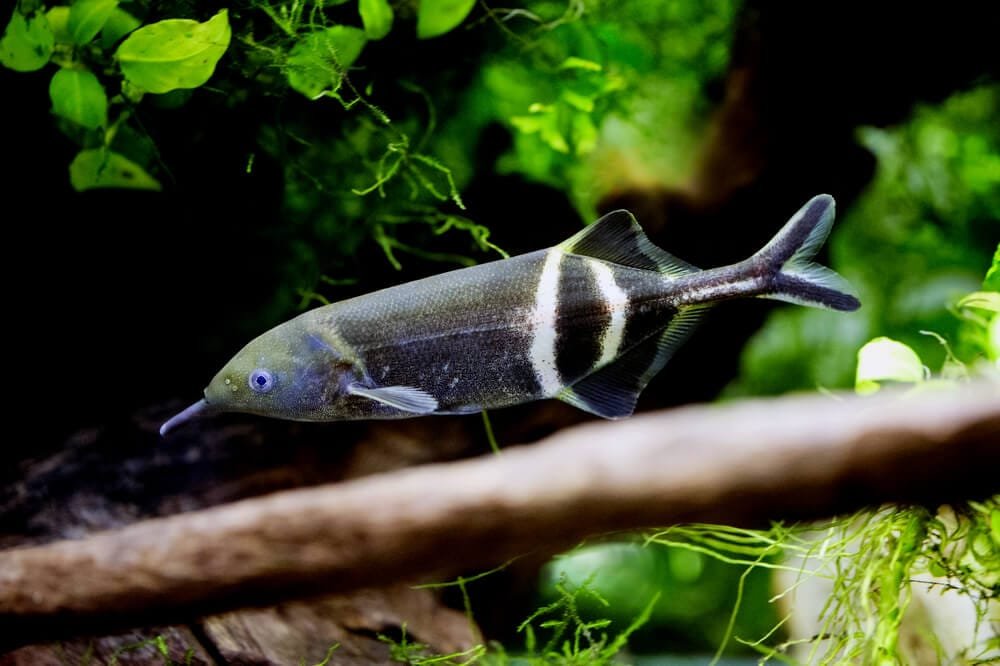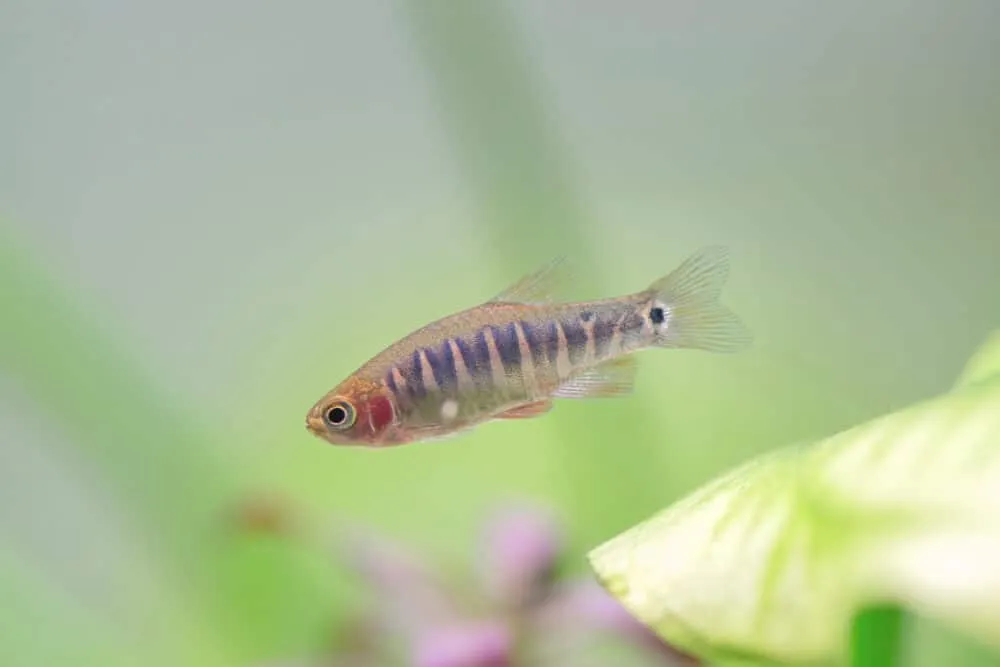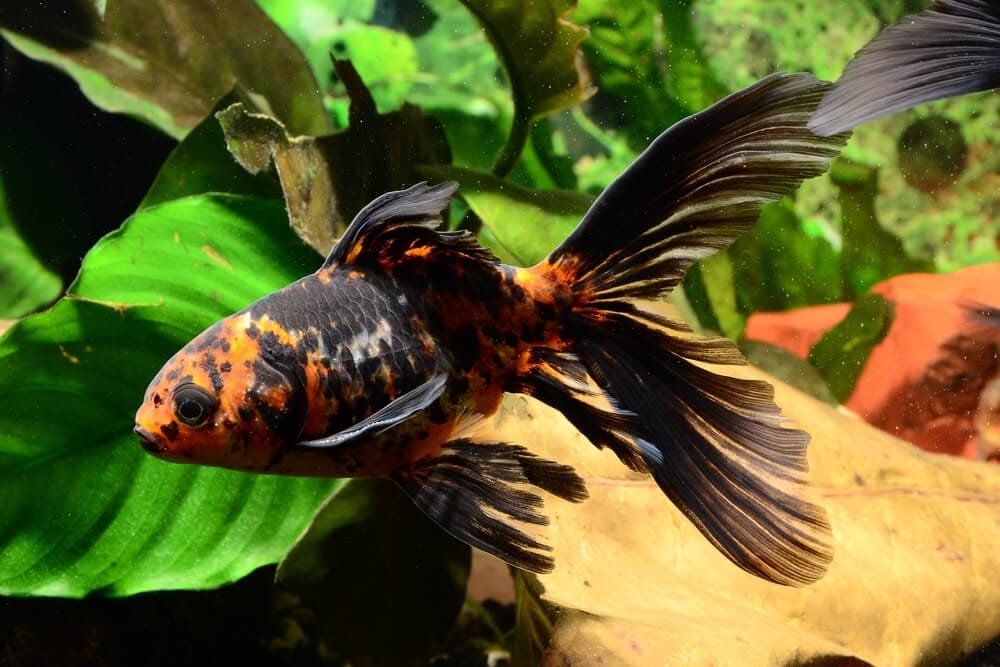Crowntail Betta: Care Tips for Stunning Fish Varieties

If you’re a fan of vibrant and captivating fish, then you’ve likely come across the stunning Crowntail Betta. Known for its distinctive, elaborate fins, the Crowntail Betta is a popular choice for pet enthusiasts around the world. With its regal appearance and a vibrant color palette that ranges from fiery reds to shimmering blues, this fish is a true showstopper in any aquarium. But there’s so much more to discover about this fascinating species. From its origins in Southeast Asia to its unique breeding habits, this article will take you on a journey into the world of the Crowntail Betta. Get ready to be amazed by the beauty and charm of this captivating aquatic creature.
Appearance
Fin Shape
One of the most striking features of the Crowntail Betta is its unique fin shape. Unlike other Betta varieties, the Crowntail Betta has elongated rays on its fins that resemble the points of a crown when fully extended. This distinctive trait gives the Crowntail Betta its name and sets it apart from other members of the Betta Splendens species.
Coloration
Crowntail Bettas are known for their vibrant and diverse coloration. From vibrant reds to brilliant blues, these fish come in a wide range of colors and patterns. Whether you prefer a solid color or a mesmerizing multicolor blend, you can find a Crowntail Betta to suit your taste. The coloration of these fish can vary greatly depending on various factors, including genetics and breeding.
Size
When it comes to size, Crowntail Bettas are typically small fish. On average, they grow to be about 2.5 to 3 inches in length, making them a great choice for those who have limited space or smaller aquariums. Despite their small size, these fish have a captivating presence in any tank, thanks to their long, flowing fins and vibrant colors.
Origins
Wild Betta Splendens
The Crowntail Betta, also known as Betta Splendens, is native to Southeast Asia, particularly Thailand, Cambodia, and Vietnam. In the wild, they inhabit slow-moving rivers, ponds, and rice paddies. These natural habitats are characterized by warm temperatures and shallow waters with plenty of vegetation. It is in these natural environments that these fish developed their vibrant colors and unique fin shapes.
Breeding History
Over the years, breeders have selectively bred Crowntail Bettas to enhance their unique fin shape and stunning coloration. This breeding process has resulted in the wide variety of colors and patterns seen in Crowntail Bettas today. By carefully selecting individuals with desirable traits and pairing them, breeders have been able to create stunning and distinctive variations of this popular Betta fish.
Habitat and Care
Water Parameters
To ensure the health and well-being of your Crowntail Betta, it’s essential to maintain the right water parameters. These fish thrive in warm water with a temperature range of 78 to 82 degrees Fahrenheit. The water should also have a pH level between 6.5 and 7.5, which is slightly acidic to neutral. Additionally, it is important to keep ammonia and nitrite levels at zero and nitrate levels below 20 ppm.
Tank Setup
When setting up a tank for your Crowntail Betta, it’s important to provide ample hiding spots and areas for exploration. Dense vegetation, caves, and ornaments can create a stimulating environment for your fish. Additionally, these fish are labyrinth breathers, meaning they have a special organ that allows them to breathe air from the surface. It’s essential to provide access to the water’s surface by leaving a small gap or using a filtration system with a gentle flow.
Feeding
Crowntail Bettas are carnivorous and primarily feed on small insects and zooplankton in the wild. In captivity, they can be fed a variety of foods, including pre-packaged Betta pellets, live or frozen foods, and even certain vegetables. It’s important to provide a balanced diet and avoid overfeeding to prevent obesity and related health issues.
Tank Mates
When selecting tank mates for your Crowntail Betta, it’s crucial to choose compatible fish species that will not provoke aggression or stress. Crowntail Bettas are generally territorial and may exhibit aggression towards other Betta fish or fish with long, flowing fins. Opting for peaceful, non-nipping fish such as small shoaling species or bottom-dwelling fish can result in a harmonious community tank.
Temperament
Aggression Levels
Crowntail Bettas are known for their aggressive nature, especially towards other male Bettas. They have been selectively bred for their territorial behavior, which can result in fights and potential harm to other fish. It’s important to keep male Crowntail Bettas separate unless you’re an experienced breeder. Female Crowntail Bettas, however, are generally more tolerant and may be able to coexist peacefully with other fish.
Interaction with Humans
With proper socialization, Crowntail Bettas can become quite accustomed to human interaction. They can recognize their owners and may even show excitement during feeding time. Spending time observing your fish and providing mental stimulation through hiding spots and enrichment activities can help foster a bond between you and your Crowntail Betta.
Compatibility with Other Fish
When considering tank mates for your Crowntail Betta, it’s important to choose fish with similar temperaments and swimming abilities. Avoid housing them with aggressive or fin-nipping species, as this can lead to stress, injury, or even death. Peaceful shoaling species like small tetras or Corydoras catfish can make suitable tank companions for your Crowntail Betta.
Breeding
Reproduction Process
Breeding Crowntail Bettas can be a rewarding experience for experienced fishkeepers. The process typically involves conditioning the male and female Bettas separately through a nutritious diet and maintaining optimal water conditions. Once both fish are ready, they are introduced into a breeding tank where they will engage in a courtship dance. The male builds a bubble nest, and the female lays eggs that the male fertilizes and guards until hatching.
Aquarium Requirements
When breeding Crowntail Bettas, a separate breeding tank is necessary to provide the ideal conditions for spawning. The tank should have a shallow water level, dense vegetation, and floating plants to support the bubble nest-building behavior. Maintaining warm water temperatures and a clean environment is crucial for the successful development of the eggs and fry.
Caring for Fry
After the eggs hatch, it’s important to remove the male Betta from the tank to prevent him from eating the fry. The fry are initially very small and fragile, requiring special care and attention. They should be fed infusoria or specialized fry food in the early stages and gradually transitioned to finely crushed flakes or brine shrimp as they grow. Providing clean water, appropriate feeding, and sufficient hiding spots will help ensure the survival and growth of the fry.
Common Health Issues
Fin Rot
Fin rot is a common health issue that affects many Betta fish, including Crowntail Bettas. It is typically caused by poor water quality, stress, or a bacterial infection. Symptoms of fin rot include fraying or disintegrating fins, discoloration, and overall deterioration of the fish’s appearance. To prevent and treat fin rot, it’s important to maintain proper water parameters, provide a clean and stress-free environment, and administer appropriate medications as prescribed by a veterinarian.
Ich
Ich, or white spot disease, is another common health issue that can affect Crowntail Bettas. It is caused by a protozoan parasite, resulting in small white dots on the fish’s body, fins, and gills. Infected fish may exhibit increased scratching or flashing behavior. Treating ich involves raising the water temperature gradually and administering medication specifically designed to target the parasite. It’s important to follow the recommended dosage and treatment duration to ensure complete eradication.
Dropsy
Dropsy is a serious and often fatal condition that can affect Betta fish, including Crowntail Bettas. It is caused by a bacterial infection that affects the fish’s internal organs, resulting in fluid retention and bloating. Symptoms include a swollen abdomen, scales sticking out, loss of appetite, and lethargy. Unfortunately, dropsy is challenging to treat, and prevention is key. Maintaining good water quality, a balanced diet, and a stress-free environment can help prevent this devastating condition.
Velvet Disease
Velvet disease, also known as gold dust disease, is a parasitic infection caused by the parasite Piscinoodinium. Infected fish exhibit a yellowish or gold dust-like appearance, flashing behavior, and loss of appetite. Treatment involves raising the water temperature and administering medications designed to eradicate the parasite. Ensuring optimal water quality, hygiene, and quarantine measures can help prevent the spread of velvet disease.
Diet
Pre-packaged Betta Food
Pre-packaged Betta food pellets are a convenient and balanced diet option for Crowntail Bettas. These pellets are specifically formulated to meet the nutritional needs of Betta fish. Look for high-quality pellets that contain a mix of protein, vitamins, and minerals to ensure your fish receives a well-rounded diet. It’s important to feed your Betta fish small amounts of pellets and adjust the quantity based on their appetite and the instructions on the packaging.
Live and Frozen Foods
Adding live or frozen foods to your Crowntail Betta’s diet can provide additional nutrients and enrichment. Small live foods such as brine shrimp, bloodworms, and daphnia are highly beneficial and mimic the natural diet of these fish in the wild. Live foods not only offer nutritional benefits but also encourage natural foraging behavior and mental stimulation. However, it’s important to source these foods from reputable suppliers to avoid introducing any harmful pathogens or parasites to your tank.
Vegetables
While Crowntail Bettas are primarily carnivorous, they can also benefit from occasional vegetable additions to their diet. Blanched and finely chopped vegetables like peas or spinach can provide fiber and act as a laxative, aiding in digestion. Before feeding vegetables, ensure they are thoroughly washed and cooked or blanched to make them easier for your Betta fish to consume and digest.
Tank Setup
Filtration
An efficient filtration system is crucial for maintaining a clean and healthy environment for your Crowntail Betta. Choose a filter that provides both mechanical and biological filtration, as well as gentle water flow. Since Bettas prefer low water flow, it’s advisable to use a sponge filter or adjustable filter to minimize agitation and prevent damage to their long fins. Regularly clean and maintain the filter to ensure its optimal performance.
Heating
Crowntail Bettas are tropical fish and require a consistent water temperature to thrive. A reliable aquarium heater is essential to maintain the recommended temperature range of 78 to 82 degrees Fahrenheit. Select a heater appropriate for the size of your tank and use a thermometer to monitor the water temperature regularly. Positioning the heater near the filter outlet can help distribute the heated water evenly throughout the tank.
Decoration
Creating a visually appealing and stimulating environment is important for the well-being of your Crowntail Betta. Consider using live or artificial plants to provide hiding spots, resting places, and opportunities for exploration. Smooth ornaments, rocks, and driftwood can also enhance the aesthetics while offering additional hiding spaces. Avoid using sharp or rough decorations to prevent any potential injuries to your fish’s delicate fins.
Aquarium Maintenance
Water Changes
Regular water changes are essential for maintaining optimal water quality for your Crowntail Betta. A general guideline is to perform a partial water change of about 25% to 50% every one to two weeks. This helps remove accumulated toxic substances, such as ammonia and nitrates, and replenishes essential minerals. Adjust the frequency and amount of water changes based on the size of your tank and the number of fish to ensure a healthy and stable aquatic environment.
Cleaning the Tank
Routine cleaning of the tank is necessary to remove excess debris and prevent the buildup of harmful bacteria. Using a siphon or gravel vacuum, gently clean the substrate and remove any uneaten food or waste. Avoid using harsh chemicals or detergents, as they can be toxic to your fish. Regularly wipe down the tank walls and clean the filter components according to the manufacturer’s instructions to maintain optimal performance.
Testing Water Parameters
Regularly monitoring water parameters is crucial for the health and well-being of your Crowntail Betta. Test kits are available to measure ammonia, nitrite, nitrate, and pH levels. By keeping track of these parameters, you can identify and address any potential water quality issues before they have a negative impact on your fish. Follow the instructions provided with the test kits and make any necessary adjustments to maintain stable and suitable water conditions.
Conclusion
The Crowntail Betta is a captivating and beautiful fish that adds a vibrant burst of color to any aquarium. With their unique fin shape and stunning coloration, these fish are sure to be a focal point in your tank. While they require specific care and attention, the rewards of keeping and breeding Crowntail Bettas are plentiful. By providing a suitable environment, a balanced diet, and regular maintenance, you can ensure the health and happiness of your Crowntail Betta for years to come.





